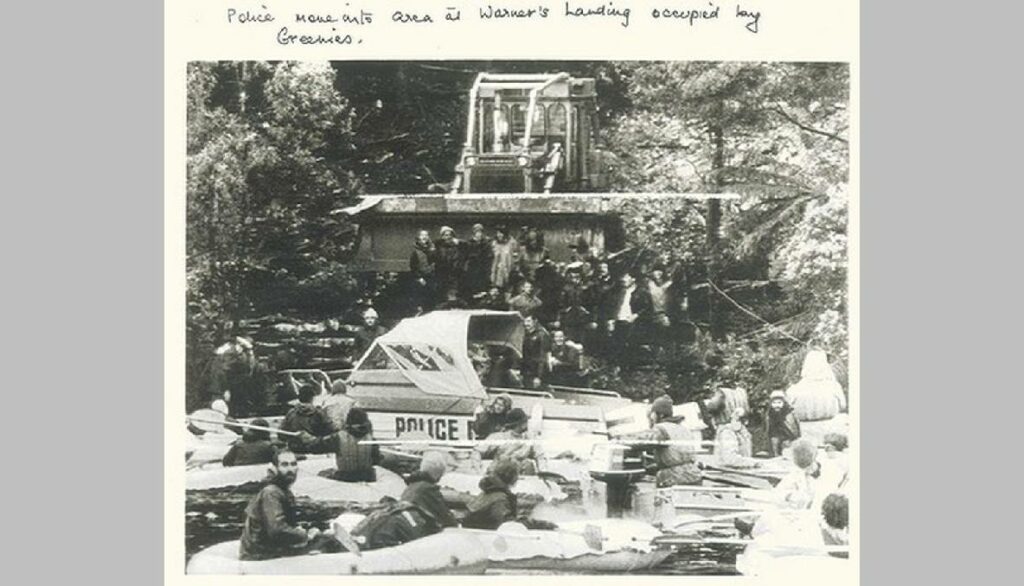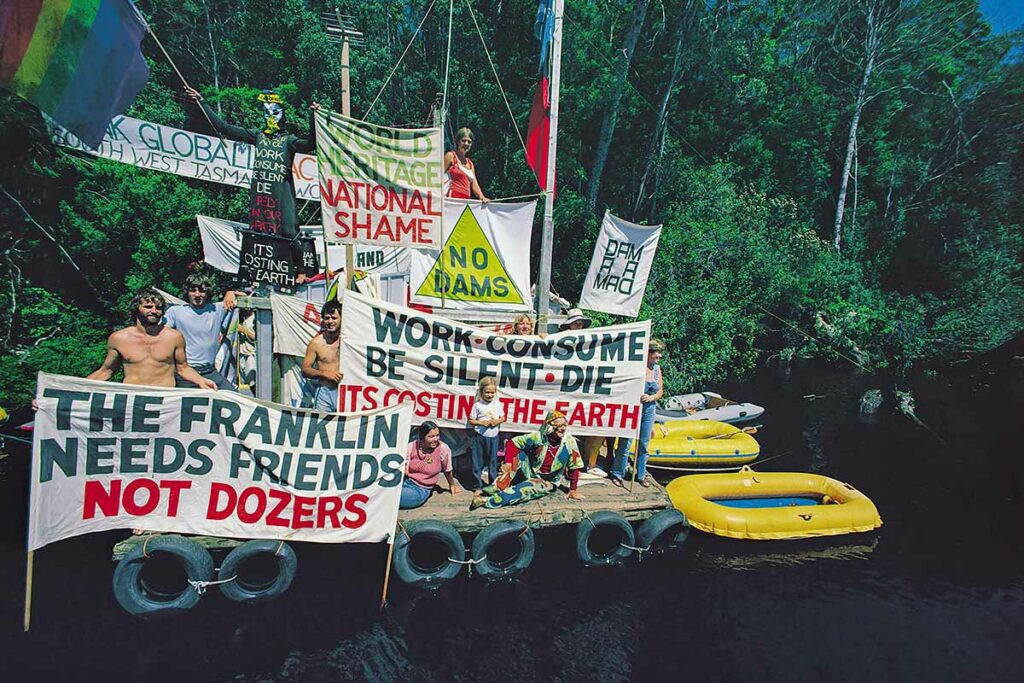
Wild West Coast Tasmania
There are 13 World Heritage listed areas in Australia. The Tasmanian Wilderness World Heritage Area (TWWHA) was declared in 1982, covering one and a half million hectares.
Tasmania’s West Coast Wilderness is one of the most breath taking, raw, untouched, and protected areas on earth. With its pure air and rolling hills, calm and spiritual rivers, it covers approximately 1/5 of the island Tasmania.
All this was almost destroyed because in 1978 the Tasmanian Hydro Electric Commission (HEC) announced intensions to construct a dam, the Franklin River dam. The dam was proposed for the purpose of generating hydro electricity, but construction of a hydro electric complex has a monumental environmental impact. They disrupt the natural ecology of the river involved, affecting habitats and ecosystems, and siltation and erosion patterns. While dams can ameliorate the risks of flooding, dam failure can be catastrophic.
The idea polarised the Tasmanian community. It gained support from some sections of the community for generating jobs in the area of the state that was struggling economically. It was suggested that the construction of the dam would assist in bringing industry to Tasmania, on top of jobs that it would create directly. The initial opinion polls showed around 70% support for the dam.
However, the protest movement which had gathered to fight the construction of the Lake Pedder Dam earlier in the 1970s began to reassemble in response to the announcement. The Tasmanian Wilderness Society (which had formed from the anti-Lake Pedder Dam), and Southwest Tasmanian actions groups, The Conservation Trust, and The Australian Conservation Foundation began to mount a public interest campaign concerning the river.
The bright yellow iconic “No Dams” triangle sticker was soon created and in June 1980 some 10,000 No Dams protesters marched through Hobart. This made a huge impact with it following rallies and events held in cities around Australia.
In 1981 at the Tasmanian Power Referendum, 47% of the electorate voted in favour of the dam, however there was 45% informal votes whereby thousands scrawled “No Dams” on their ballot papers.
In November 1982 Bob Brown (Co-founder of The Wilderness Society) announced that a blockade at the dam site would begin on December 14th.
On March 5th 1983 the Australian Labour party wins the federal election and Bob Hawke becomes the new prime minister, who in his first interview after being elected declares “The dam will not be built”. Hawke uses the World Heritage Properties Conservation Act 1983 to prohibit Franklin River dam related clearing, excavation and building. However, the Tasmanian Government ignores the legislation and continues to work on the dam.
In April 1983 the Australian Government sent a Mirage jet and later an RF-111, from the Royal Australian Air Force, to undertake a reconnaissance mission over the dam to gather evidence that the Tasmanian Government was not complying with Federal legislation to stop work. The issue was brought before the High Court. In a landmark decision, the High Court rules in the Federal Governments favour by a vote of four votes to three. The ruling means the Federal Government had the legal power to implement the provisions of the World Heritage Convention and the Franklin River was officially saved!
The proposed construction would have subsequently impacted upon the environmentally sensitive Franklin River, which joins the nearby Gordon River.
The same day that the blockade was announced the UNESCO (United Nations Educational, Scientific and Cultural Organization) met to consider new places for World Heritage status at its headquarters in Paris. On that list was the Tasmanian Wilderness National Parks.
In this meeting the UNESCO declared:
“The Committee is seriously concerned at the likely effect of dam construction in the area on those natural and cultural characteristics which make the property of outstanding universal value. In particular, it considers that flooding of parts of the river valleys would destroy a number of cultural and natural features of great significance, as identified in the ICOMOS and IUCN reports. The Committee therefore recommends that the Australian authorities take all possible measures to protect the integrity of the property. The Committee suggests that the Australian authorities should ask the Committee to place the property on the List of World Heritage in Danger until the question of dam construction is resolved.”
Most UNESCO World Heritage sites meet only one or two of the ten criteria for that status. The Tasmanian Wilderness World Heritage Area (TWWHA) meets seven of the ten criteria. Only one other place on earth – China’s Mount Taishan, meets that many criteria!
TWWHA criteria: (iii) (iv) (vi) (vii) (viii) (ix) (x)
You can find out more on each selection criteria here.

Famous “NO DAMS” sticker

Franklin River

Wilderness Society Headquarters

1980 protest in Hobart

Protesters & bulldozers on the Franklin

Protesters on the Franklin
